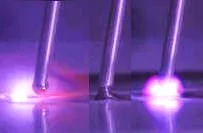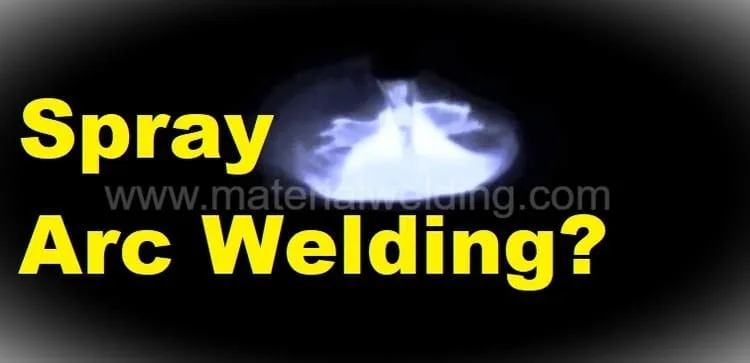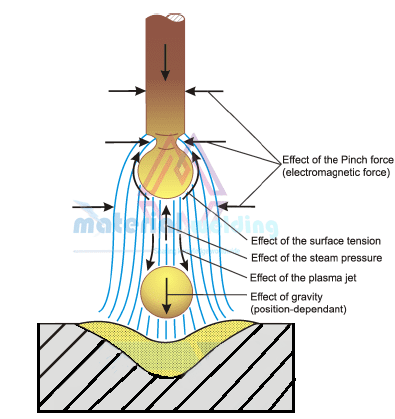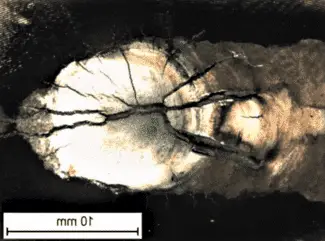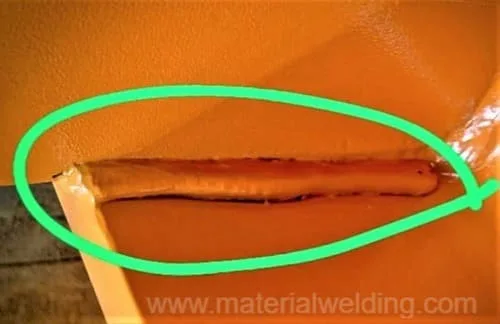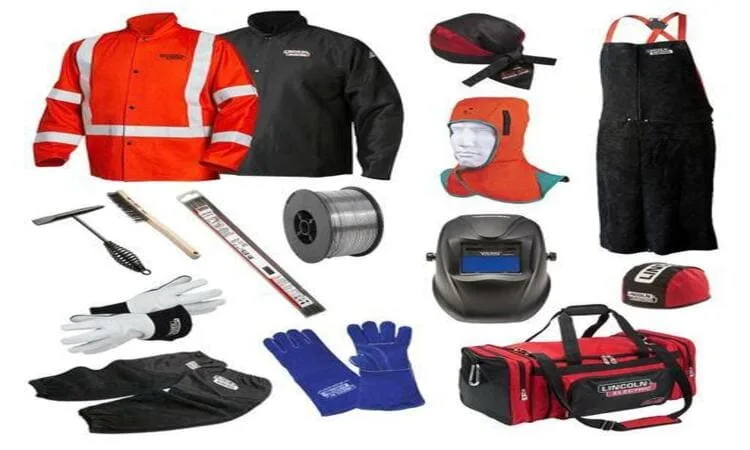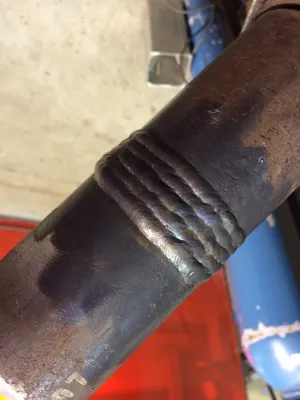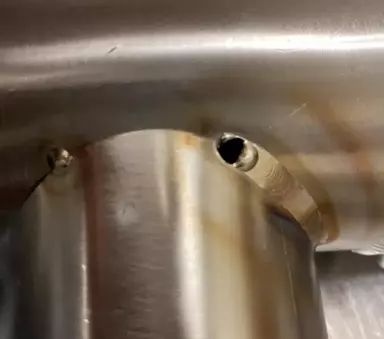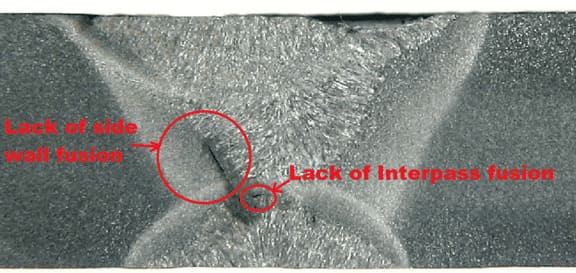What Is Spatter in Welding?
Welding Spatter is created when small droplets of molten metal are expelled from the weld pool during the welding process. These droplets solidify quickly and can adhere to the base metal or surrounding areas, which can create defects in the weld.
These droplets can be a nuisance, as they can cause weld defects and can be difficult to remove from the workpiece. However, there are ways to minimize spatter and make the welding process more efficient.
While spatter can be annoying, it is generally not harmful. However, it can be a safety hazard if it lands on the operator’s skin or clothing.
Related Welding: Welding Defects, Causes & Prevention.
While some amount of spatter is inevitable, there are ways to minimize it through proper welding techniques and equipment setup. By understanding what causes spatter and how to prevent it, welders can produce cleaner, high-quality welds.
What causes Spatters in Welding?
Welding spatter is a common problem that can lead to costly rework and scrap, as well as safety and health issues. There are many factors that can contribute to welding spatter, including:
- Improper electrode manipulation.
- Incorrect welding parameters such as high amperage, wire feed rate.
- Contaminated consumables or work-piece.
- poor gas coverage.
- Wrong welding technique.
- High arc length/ stick out during welding.
- Damaged welder/ welding machine.
In this article, we’ll take a closer look at each of these causes and offer some tips on how to avoid them.
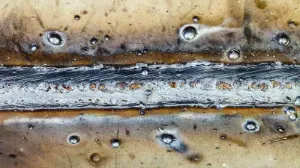
- Improper electrode manipulation is one of the most common causes of welding spatter. If the electrode is not properly cleaned or positioned, it can cause the arc to be unstable, leading to increased spatter. To avoid this, be sure to clean the electrode tip with a wire brush before each use and position it so that it’s flush with the workpiece.
- Incorrect welding parameters are another common cause of welding spatter. Using a high welding current will cause excessive electrode wire melt-off that will create turbulence in weld pool and results in spatters.
- Welding on contaminated surface or using damaged-contaminated welding consumables will results in spatters.
- Welding in out of positions also results in spatters and requires control of right welding technique and parameters.
How to prevent spatter in welding?
Spatter is one of the most common welding problems. It is caused by metal droplets that are ejected from the weld during welding. The droplets can cause burns, electrical shocks, and fire hazards. There are several ways to prevent spatter:
- Use the correct welding techniques. When welding, be sure to use the proper techniques. This includes using the correct electrode type and polarity, maintaining a short arc length, and keeping the electrode tip close to the work piece.
- Adjust the welding parameters. Another way to prevent spatter is to adjust the welding parameters. This includes setting the correct current, voltage, and travel speed.
- Use quality consumables. Using quality consumables such as electrodes, wire, and gas can also help reduce spatter levels.
- Keep your equipment clean.
- Use calibrated and properly maintained welding machines/ welders.
- Try to weld in flat or horizontal welding position if possible. welding in out of position welding (such as vertical or overhead) will make molten weld metal to fall due to earth gravity.
- Clean the welding surface area before start of the weld.
How to prevent spatter in MIG welding?
One of the main issues with MIG welding is spatter. Spatter is when small drops of molten metal are ejected from the weld area and land on the surrounding area.
This can cause problems with the weld, as well as be a safety hazard. There are a few ways to prevent spatter when MIG welding as listed below:
- Avoid welding using pure CO2 welding gas. Use minimum 75-25 welding gas for MIG welding.
- Make sure the welding torch , liners, wire-feeder, rollers are in perfect condition. If any of these part damage, it will result in irregular wire feeding and will result in spatters.
- Avoid welding with short-circuit and globular transfer mode. Spray transfer mode and Pulse mode are best to avoid spatters in MIG welding.
How to prevent spatter in Stick welding?
Stick welding is a commonly used welding process, but it can be difficult to prevent spatter. Spatter is the result of weld metal droplets that are expelled from the arc during welding. These droplets can land on the workpiece, the electrode, or even the welder themselves.
There are a few things that you can do to prevent spatter in stick welding.
- First, make sure that you have a clean and smooth surface on your workpiece. Any roughened areas will cause more weld metal to be expelled from the arc.
- Second, use a lower current setting when welding. This will help to minimize the amount of weld metal that is expelled from the arc.
- Third, follow the recommended welding polarity only. E.g., using E7018 with electrode negative instead of Electrode positive, will result in more spatters.
- Finally, make sure that you maintain a steady arc length. If the arc length fluctuates, it will also cause more weld metal to be expelled from the arc.
Effect of Spatters in Welding
Spatter is small droplets of molten metal that are ejected from the welding arc. While most of the time spatter is not a cause for concern, it can occasionally lead to welding defects.
- Too much spatter can cause the weld bead to be uneven, which can weaken the overall joint. In addition, spatter can also cause lack of fusion in the weld, if not cleaned during interpass cleaning.
- The spatter can also cause problems with the finish of the weld, making it difficult to achieve a smooth, consistent appearance. In addition, the spatter can be a safety hazard, as it can cause burns or other injuries if it comes into contact with the skin.
- One of the major concerns for welding spatters is painting parts after welding. As spatters are not fused with weld or base metal, they are prone to detach with a small force. Hence, if they are not removed before painting and paint is applied to them. They can detach in-service and cause localized corrosion in that area.
While spatter is usually not a major issue, it is important to be aware of its potential effects on your welding project. By understanding how spatter can impact your welds, you can avoid any potential problems down the line.
Welding Spatter Spray and Paste
There are a few different ways to prevent or reduce the amount of spatter produced during welding. One method is to use an anti-spatter spray or paste.
These products work by creating a barrier between the welding arc and the surface being protected.
This barrier helps to prevent the formation of a spatter and can also make it easier to remove any spatter that does form.
Learn about other welding defects:
- Welding Porosity.
- Lack of Fusion.
- Undercut in Welding.
- Burn through in Welding.
- Tungsten inclusion in welding.
- Types of Crack in welding and crack prevention
